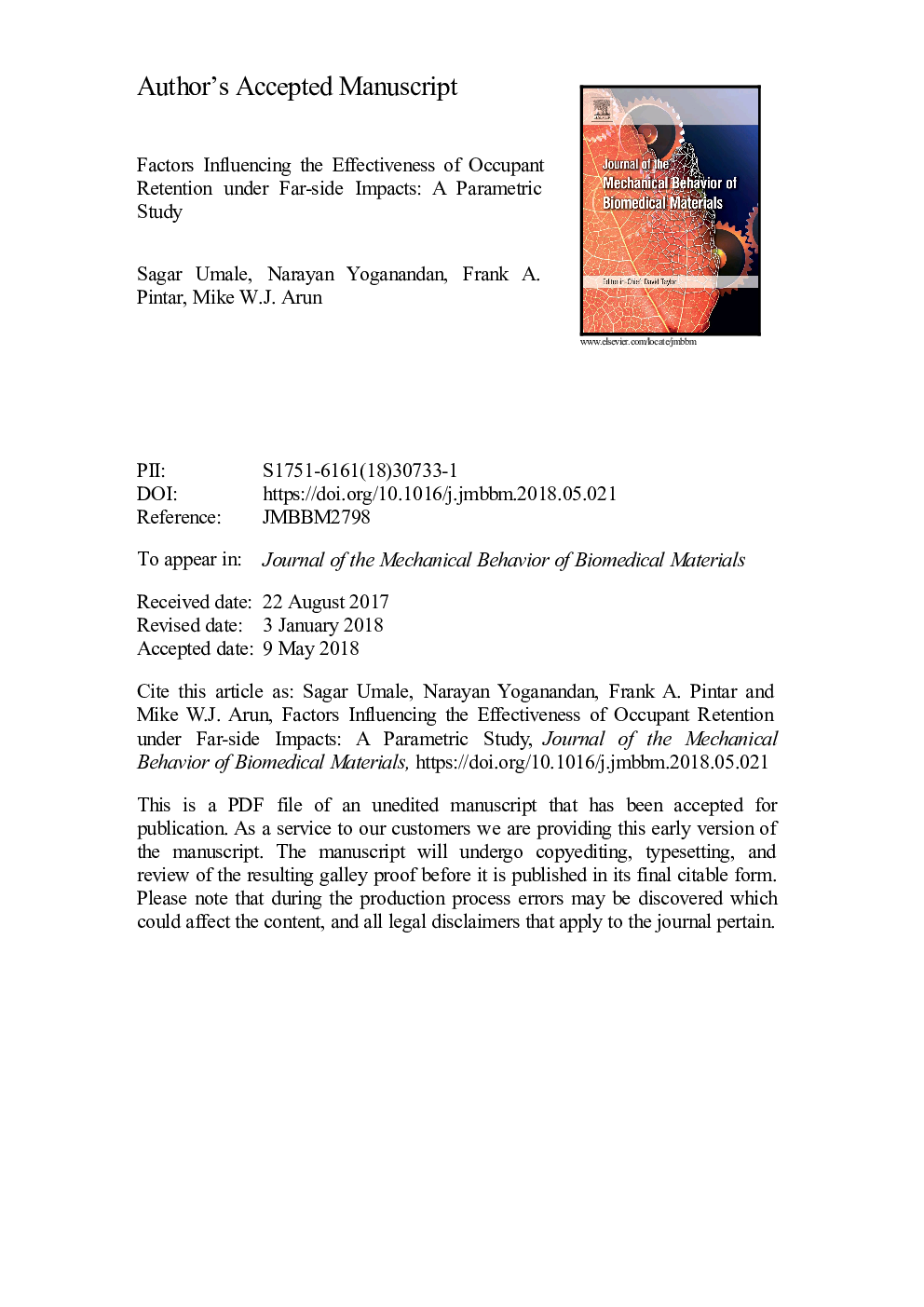| کد مقاله | کد نشریه | سال انتشار | مقاله انگلیسی | نسخه تمام متن |
|---|---|---|---|---|
| 7207013 | 1469061 | 2018 | 30 صفحه PDF | دانلود رایگان |
عنوان انگلیسی مقاله ISI
Factors influencing the effectiveness of occupant retention under far-side impacts: A parametric study
ترجمه فارسی عنوان
عوامل موثر بر اثربخشی نگهداری اشخاص تحت تاثیرات جانبی: یک مطالعه پارامتری
دانلود مقاله + سفارش ترجمه
دانلود مقاله ISI انگلیسی
رایگان برای ایرانیان
موضوعات مرتبط
مهندسی و علوم پایه
سایر رشته های مهندسی
مهندسی پزشکی
چکیده انگلیسی
The occupant retention and injuries under far-side impact are invariably dependent upon the effectiveness of the seatbelt restraint system, which is largely driven by parameters such as seatbelt pre-tensioner limiting load, D-ring position above and behind the shoulder, and friction coefficient between the torso and the seatbelt. The cumulative effect of systematic variation of these parameters on occupant kinematics under far-side is rarely studied in the literature. In this study, a systematic and detailed analysis was performed to understand the effect of these parameters on occupant retention. A rigid buck assembly with Global Human Body Model Consortium Human Body Model, validated with post mortem human surrogate experiments was used under two different impact scenarios-lateral and oblique. A simulation matrix of 16 cases was designed by varying the magnitude of the parameters for each impact scenario. Each case was graded as good, moderate, or poor retention based on the position of the shoulder seatbelt at the time of rebound. Head accelerations and excursions, chest compression, rib fractures, and neck moments of the HBM were analyzed to understand the effect of improved retention on occupant kinematics. Results showed that higher pre-tensioner limiting load, higher seatbelt friction, and backward position of D-ring improved retention in both lateral and oblique scenarios. Head acceleration, and excursions and chest compression decreased from poor retention cases to good retention cases for both impact scenarios. Rib fractures were higher in cases with poor retention as compared to those with good retention. The peak lateral neck moments changed marginally from poor to good retention; however, the rate of loading of the neck was significantly higher in good retention. Thus, the current study suggested that the backward D-ring position coupled with higher pretensioner limiting load and friction is likely to improve retention in far-side impacts and prevent injuries from the occupant slipping out of the restraint system. Better retention reduced occupant acceleration, excursion, chest compression and number of rib fractures, on the contrary it might instill higher injury vulnerability to neck and brain.
ناشر
Database: Elsevier - ScienceDirect (ساینس دایرکت)
Journal: Journal of the Mechanical Behavior of Biomedical Materials - Volume 84, August 2018, Pages 235-248
Journal: Journal of the Mechanical Behavior of Biomedical Materials - Volume 84, August 2018, Pages 235-248
نویسندگان
Sagar Umale, Narayan Yoganandan, Frank A. Pintar, Mike W.J. Arun,
